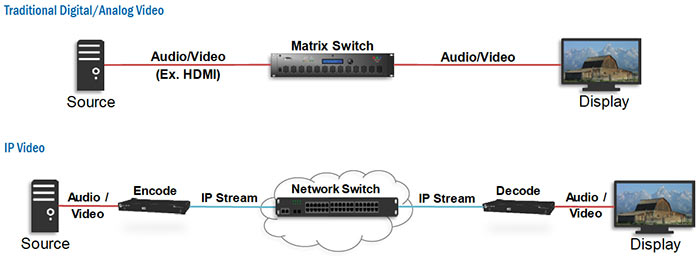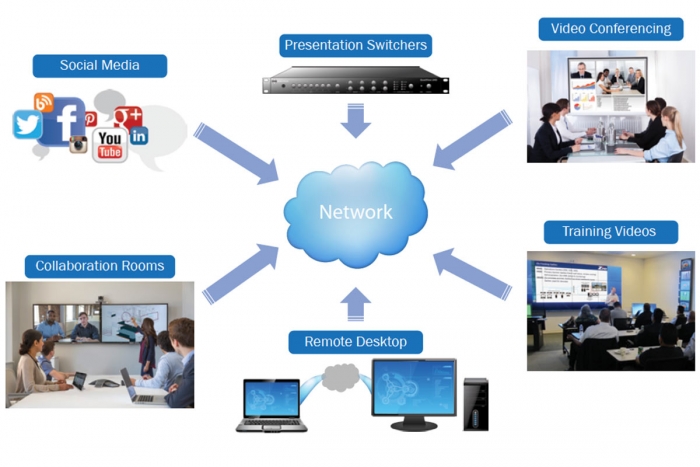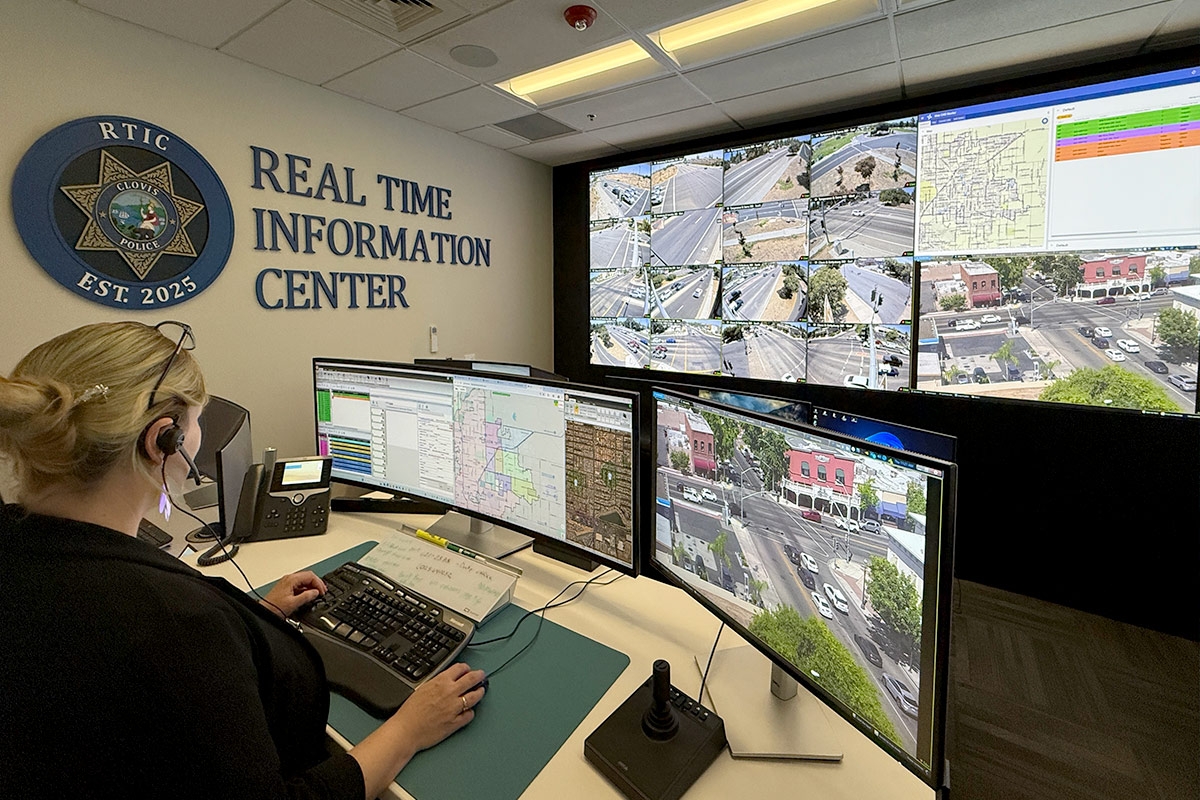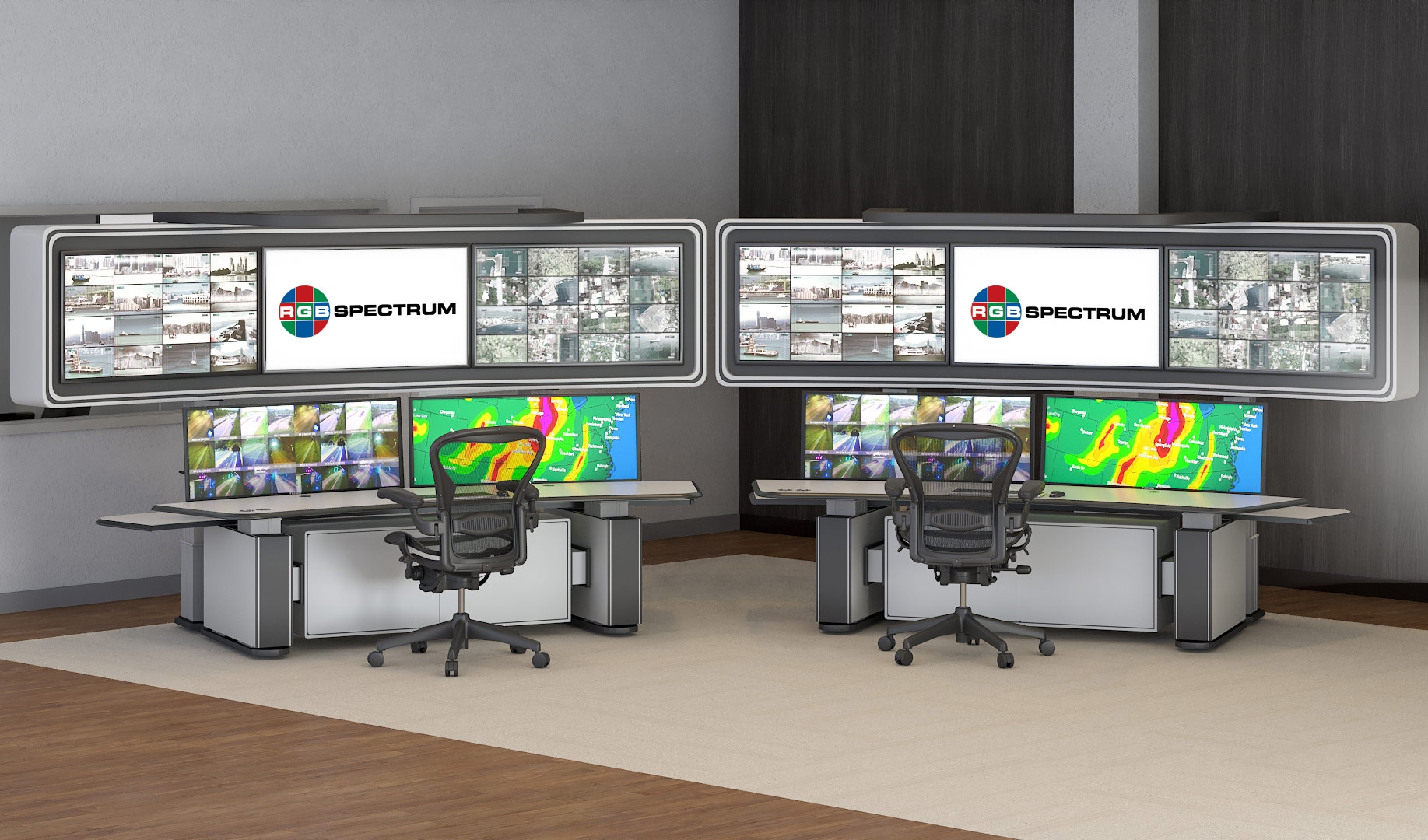Visual Technology Tutorial, Part 9: Networked AV
Video: The Standard for Communication & Collaboration
Video usage has recently skyrocketed across all market applications. From security operation centers to social media centers, encoding and decoding video streams are now an integral part of the majority of AV projects. Long gone are the days of a completely centralized equipment room with miles of heavy, expensive baseband video cabling. Today’s equipment rooms take up less space while still incorporating equipment located thousands of miles away.
Customers increasingly need content distribution across multiple rooms, buildings, and geographies. They are looking to integrators and consltants to provide a new solution that accommodates these needs.
Traditional baseband video distribution has several strengths:
- Lossless quality
- Low latency
- Fast switching
However, there are also some weaknesses associated with the hard-wired way of video distribution:
- Centralized switching and need for expensive extenders or optical connections for long cable runs
- Limited number of simultaneous devices supported
- Lack of platform flexibility - configuration and control
- Limited distance
While traditional solutions excel in close-proximity environments with a limited number of devices, new solutions are required for larger, distributed installations and IP streaming media support.
Why Networked AV?
Networked AV has been growing in popularity in the last few years. More and more AV projects are being handled by IT staff who feel quite at home with switches, routers and IPbased content. They have realized that there are some real benefits to using AV over IP.Cost Savings
The use of commodity network routers/switches and Cat5/6 cables that are either already in place or are easy to find results in a huge cost savings.
Many Networked AV endpoints can take advantage of Power over Ethernet (PoE) which allows them to be powered from the network switch. This eliminates costly and bulky power supplies and cabling to help simplify installation.
Distance
The need to integrate disparate sources that can be miles away is a probem for traditional, baseband connectivity. Networking infrastructure for AV over IP can be built across much greater disances, eliminiating any distance restrictions.Scalability
One of the key benefits of using Networked AV equipment is that there is no limit to the number of devices that can be connected together. Some systems may require a router for every certain number of endpoints which adds some cost to the overall system.
Other, more intelligent systems, such as Zio Networked AV products, auto-enumerate and distribute the managment across all devices negating the need for a centralized server.
As more encoders, decoders, multiviewers or wall processors are needed, they can simply be connected to the network. Some systems, such as Zio Networked AV, make the process of adding new devices even easier by auto-detecting them, providing plug and play operation.
If the ports on a network router are all filled, another router can easily be added to increase capacity.
Flexibility
Networks are present everywhere around the world which allows Networked AV products great flexibility. They can either share the existing data network or use their own, dedicated AV network. There are many tools available to separate the AV data from the standard office data to ensure both get the bandwidth they need to be most efficient.
Interoperability
One of the benefits of having AV equipment on the same network as other devices is the ability to interoperate. A Smart TV, for example, can pull content directly from a media server IP camera, or Zio encoder and display it in a window along with today’s weather in a hotel lobby.
Traditional vs Networked AV Connectivity

Networked AV connections offer the ability to move the source further from the destination and without compromising signal quality.
RGB Spectrum is a leading designer and manufacturer of mission-critical, real-time audio-visual solutions for a civilian, government, and military client base. The company offers integrated hardware, software, and control systems to satisfy the most demanding requirements. Since 1987, RGB Spectrum has been dedicated to helping its customers achieve Better Decisions. Faster.™


